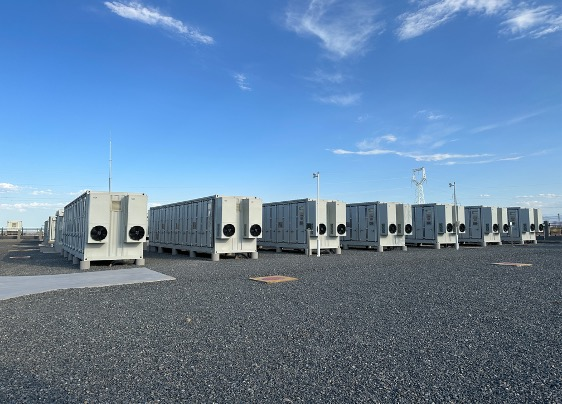
In the context of ongoing energy structure transformation, the industrial and commercial sector is a major electricity consumer and also a critical field to promote energy storage development. On one hand, energy storage technologies play an important role in improving enterprise energy efficiency, reducing electricity costs, and participating in demand response. On the other hand, there are also uncertainties in aspects like technology roadmap selection, business models, and policies and regulations in this area. Therefore, an in-depth analysis on the development prospects and challenges of C&I energy storage is of great significance to facilitate the healthy growth of the energy storage industry.
Opportunities for C&I Energy Storage
● The development of renewable energy drives the growth in demand for energy storage. The global installed capacity of renewable energy reached 3,064 GW by the end of 2022, a year-on-year increase of 9.1%. It is expected that the new installed capacity of energy storage in China will reach 30 GW by 2025. Large-scale integration of intermittent renewable energy requires energy storage capacity to balance supply and demand.
● The promotion of smart grids and demand response also boosts the demand for energy storage, as energy storage can help balance peak and off-peak power usage. The construction of smart grids in China is accelerating, and smart meters are expected to achieve full coverage by 2025. The coverage rate of smart meters in Europe exceeds 50%. A study conducted by the Federal Energy Regulatory Commission estimated that demand response programs could save the U.S. electric system costs of $17 billion per year.
● The popularity of electric vehicles provides distributed energy storage resources for industrial and commercial uses. According to the 2022 Global EV Outlook report released by the International Energy Agency (IEA), the global electric vehicle stock reached 16.5 million in 2021, triple the number in 2018. The electricity stored in EV batteries when fully charged can provide energy storage services for industrial and commercial users when the vehicles are idle. With vehicle-to-grid (V2G) technology that enables two-way communication between EVs and the grid, electric vehicles can feed power back to the grid during peak hours and charge during off-peak hours, thus delivering load shaping services. The large quantity and wide distribution of electric vehicles can offer abundant distributed energy storage nodes, avoiding the requirements for investment and land use of large-scale centralized energy storage projects.
● Policies in various countries encourage and subsidize the growth of industrial and commercial energy storage markets. For instance, the U.S. offers a 30% investment tax credit for energy storage system installation; U.S. state governments provide incentives for behind-the-meter energy storage, like California’s Self-Generation Incentive Program; the E.U. requires member states to implement demand response programs; China implements renewable portfolio standards that require grid companies to purchase a certain percentage of renewable energy, which indirectly drives the demand for energy storage.
● Enhanced awareness of electric load management in the industrial and commercial sector. Energy storage helps maximize energy efficiency and reduces peak power demand for companies.
Application Value
● Replacing traditional fossil peaker plants and providing clean peak shaving/load shifting capabilities.
● Providing localized voltage support for distribution grids to improve power quality.
● Forming micro-grid systems when combined with renewable generation.
● Optimizing charging/discharging for EV charging infrastructures.
● Providing commercial and industrial customers diversified options for energy management and revenue generation.
Challenges for C&I Energy Storage
● The costs of energy storage systems remain high and the benefits need time to validate. Cost reduction is key to promote application. Currently the cost of electrochemical energy storage systems is around CNY1,100-1,600/kWh. With industrialization, costs are expected to decrease to CNY500-800/kWh.
● The technology roadmap is still under exploration and technical maturity needs improvement. Common energy storage technologies including pumped hydro storage, compressed air energy storage, flywheel energy storage, electrochemical energy storage, etc., have different strengths and weaknesses. Continuous technology innovation is needed to achieve breakthroughs.
● Business models and profit models need to be explored. Different industry users have diverse needs, requiring tailored business model designs. The grid side focuses on peak shaving and valley filling while the user side focuses on cost saving and demand management. Business model innovation is key to ensure sustainable operations.
● The impacts of large-scale energy storage integration on the grid need evaluation. Large-scale integration of energy storage will affect grid stability, balance of supply and demand, etc. Modeling analysis needs to be conducted in advance to ensure safe and reliable integration of energy storage into grid operations.
● There is a lack of unified technical standards and policies/regulations. Detailed standards need to be introduced to regulate the development and operation of energy storage.
Energy storage holds broad prospects for industrial and commercial uses but still faces many technological and business model challenges in the short run. Concerted efforts in policy support, technological innovation, and business model exploration are required to realize rapid and healthy development of the energy storage industry.
Post time: Jul-31-2023
